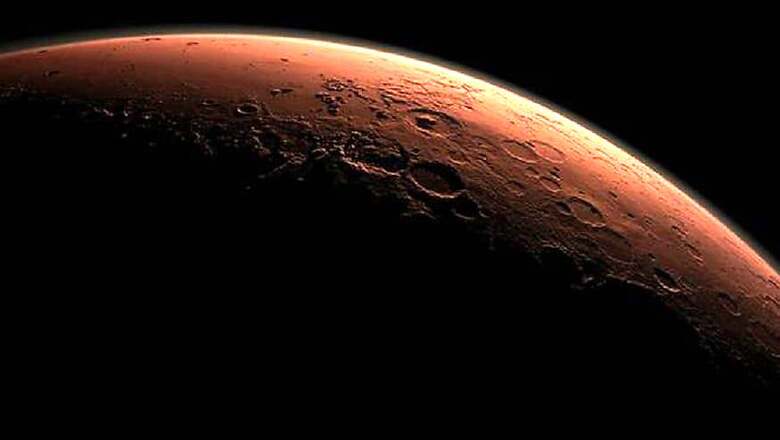
views
NASA’s Mars Exploration Rover Opportunity – which completed 5,000 Martian days – has spotted “rock stripes" on the red planet similar to those seen on some mountain slopes on Earth that result from repeated cycles of freezing and thawing of wet soil. However, the stripes might also be due to wind, downhill transport, other processes or a combination, researchers said. Opportunity landed on Mars in January 2004. As it reaches the 5,000th Martian day, or sol, of what was planned as a 90-sol mission, it is investigating a channel called “Perseverance Valley," which descends the inboard slope of the western rim of Endeavour Crater.
Also read: Apple Releases iOS 11.2.6 Update to Fix Telugu Bug That Causes iOS Devices to Crash
“Perseverance Valley is a special place, like having a new mission again after all these years," said Ray Arvidson from Washington University in the US. “We already knew it was unlike any place any Mars rover has seen before, even if we don’t yet know how it formed, and now we’re seeing surfaces that look like stone stripes. It’s mysterious," said Arvidson. On some slopes within the valley, the soil and gravel particles appear to have become organised into narrow rows or corrugations, parallel to the slope, alternating between rows with more gravel and rows with less. The origin of the whole valley is uncertain. Rover-team scientists are analysing various clues that suggest actions of water, wind or ice.
Also read: Google Exposes Security Flaw in Microsoft Edge
They are also considering a range of possible explanations for the stripes, and remain uncertain about whether this texture results from processes of relatively modern Mars or a much older Mars. Other lines of evidence have convinced Mars experts that, on a scale of hundreds of thousands of years, Mars goes through cycles when the tilt or obliquity of its axis increases so much that some of the water now frozen at the poles vaporises into the atmosphere and then becomes snow or frost accumulating nearer the equator. “One possible explanation of these stripes is that they are relics from a time of greater obliquity when snow packs on the rim seasonally melted enough to moisten the soil, and then freeze-thaw cycles organised the small rocks into stripes," Arvidson said. “Gravitational downhill movement may be diffusing them so they don’t look as crisp as when they were fresh," he said.
Also read: Google AI Can Predict Heart Disease by Looking at Pictures of The Retina
Bernard Hallet of the University of Washington in the US agrees the alignments seen in images of Perseverance Valley are not as distinctive as the stone stripes he has studied on Earth. Field measurements on Earth, near the summit of Hawaii’s Mauna Kea where the soil freezes every night but is often dry, have documented how those form when temperature and ground conditions are right. Soils with a mix of silt, sand and gravel expand more where the finer-grain material is most prevalent and retains more water. Freezing expands the soil, pushing larger particles up. If they move to the side, as well as down the general slope, due to gravity or wind, they tend to move away from the finer-grain concentrations and stretch out downslope. Where larger particles become more concentrated, the ground expands less.
The process repeats hundreds or thousands of times, and the pattern self-organises into alternating stripes. Perseverance Valley holds rocks carved by sand blowing uphill from the crater floor, and wind might also be the key in sorting larger particles into rows parallel to the slope.
Watch: Tech and Auto Show Ep 31 | Auto Expo 2018 Special | Unveilings & Launches



















Comments
0 comment